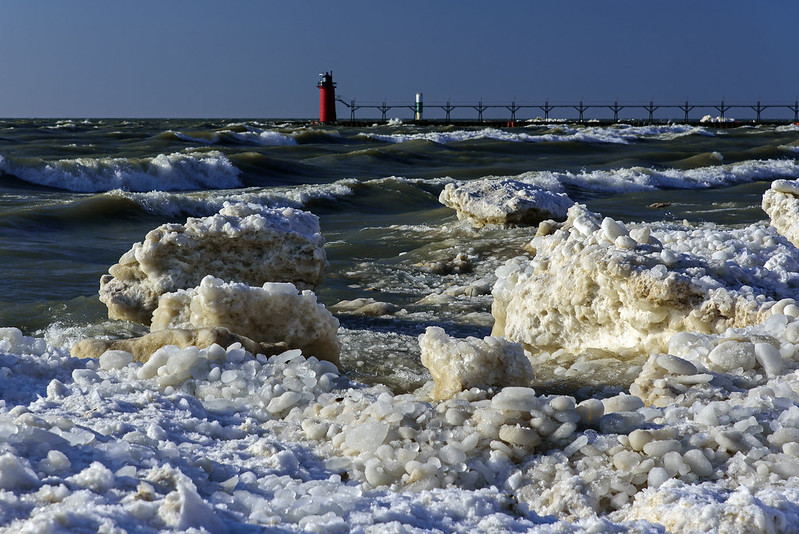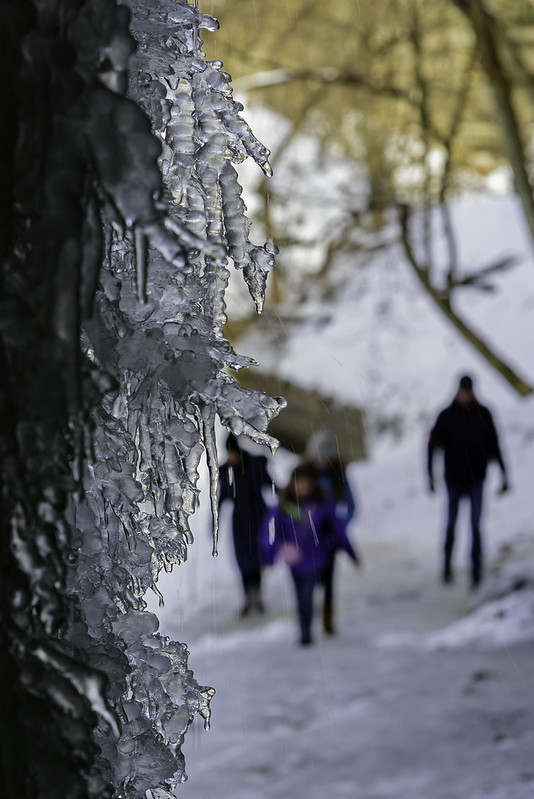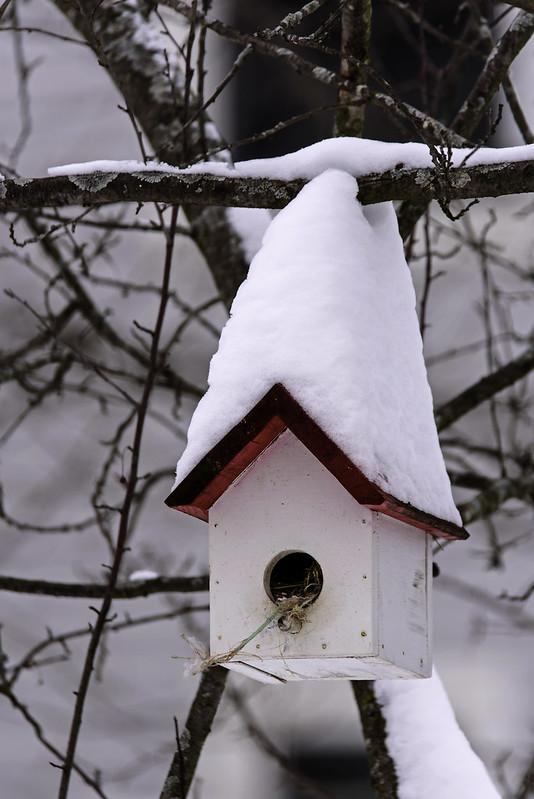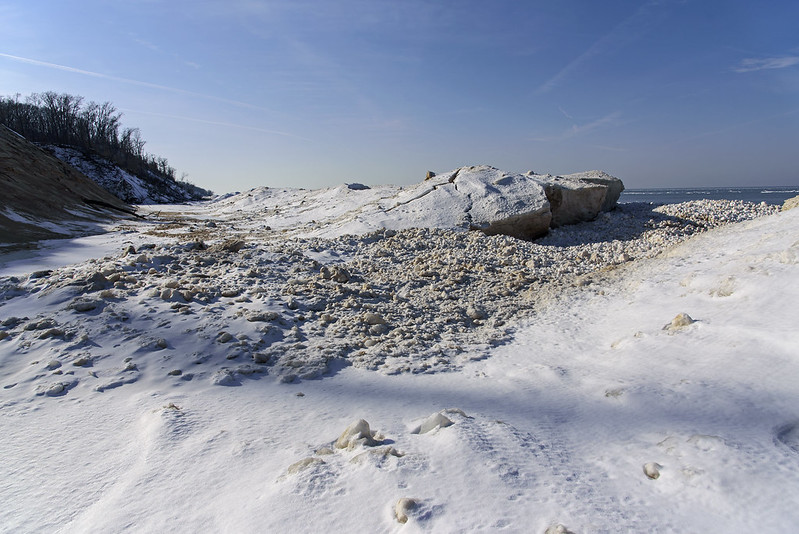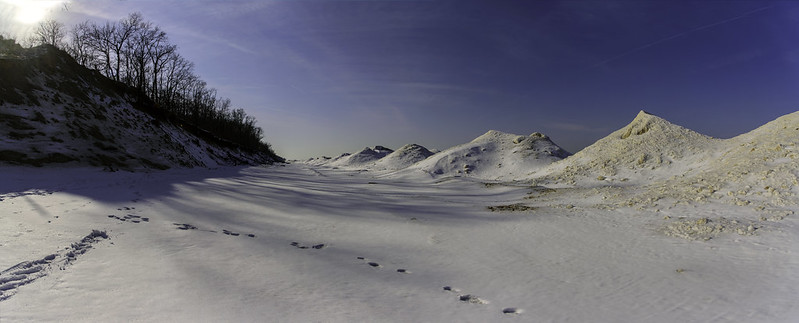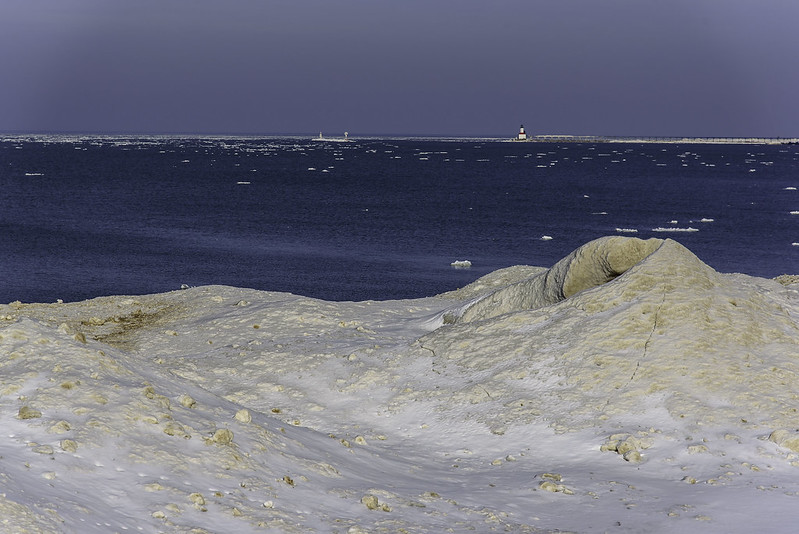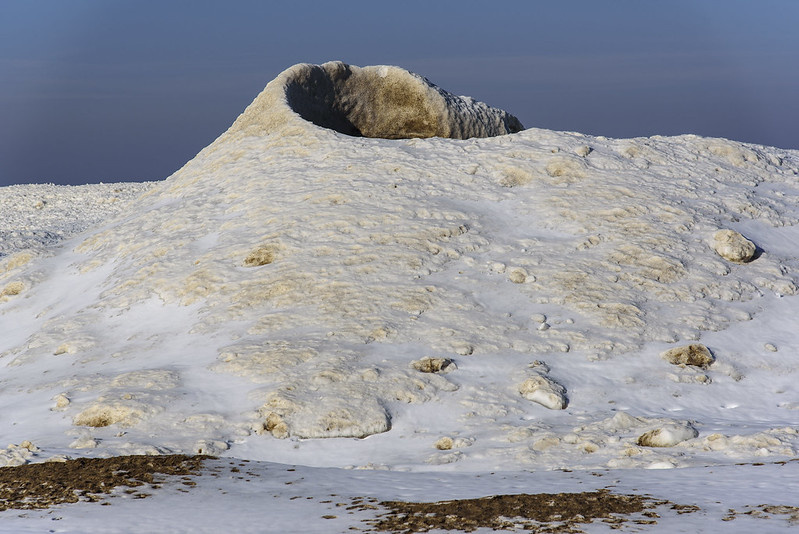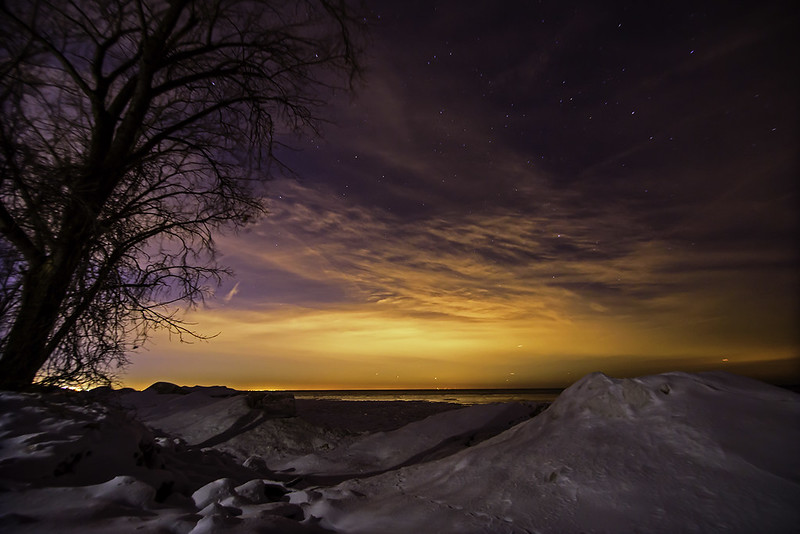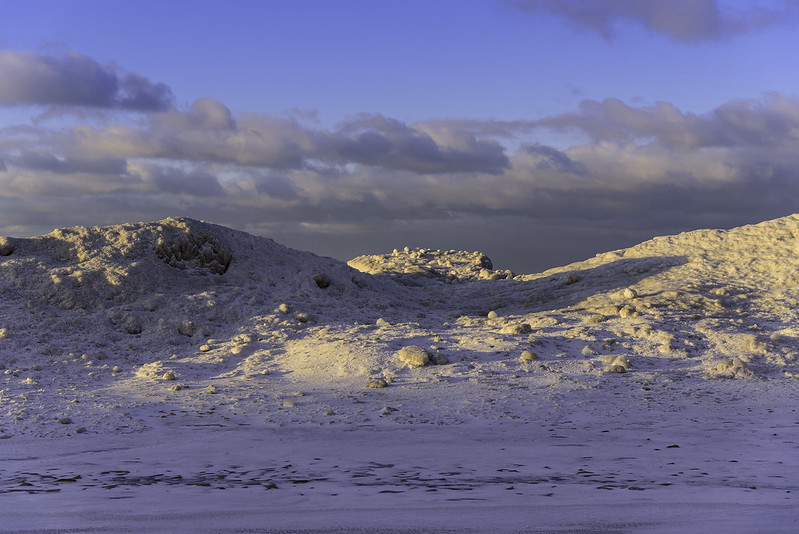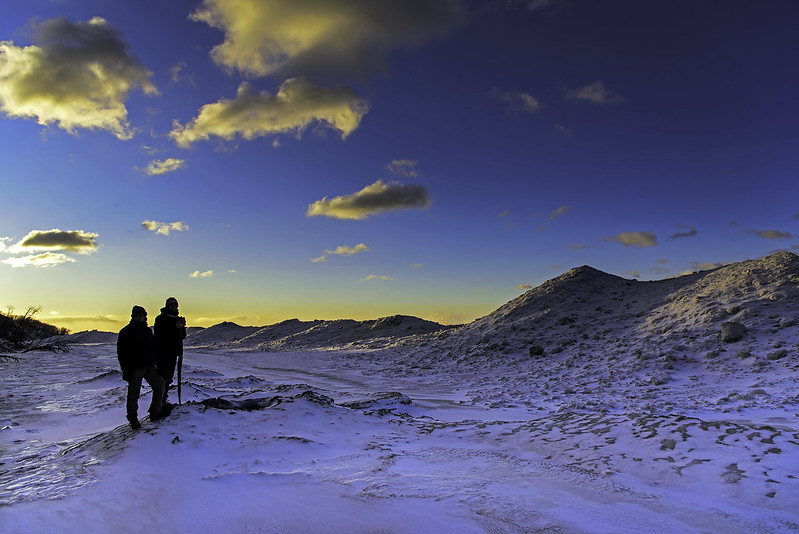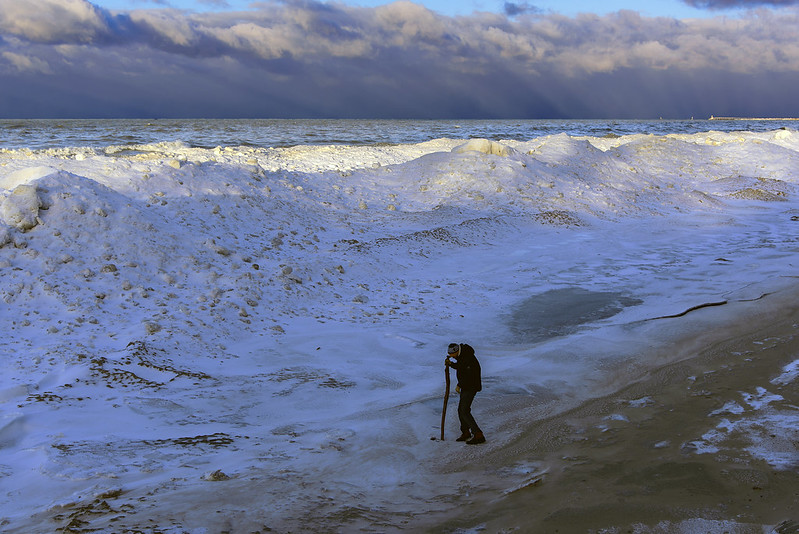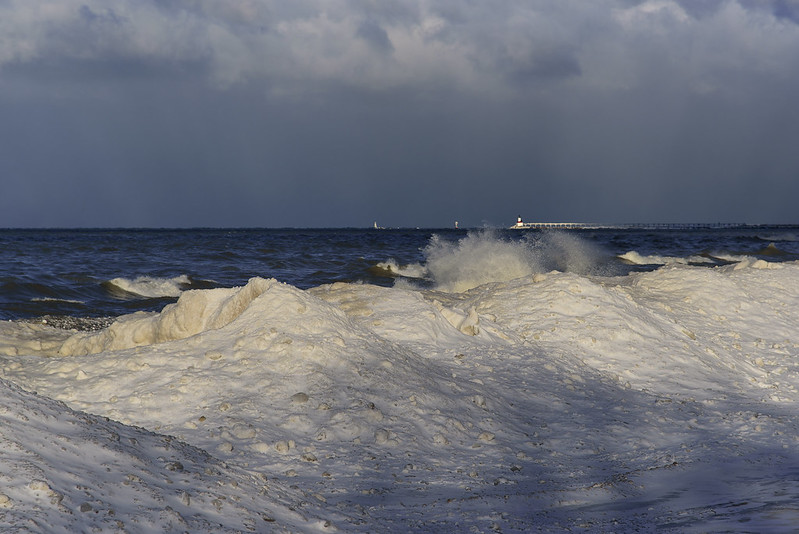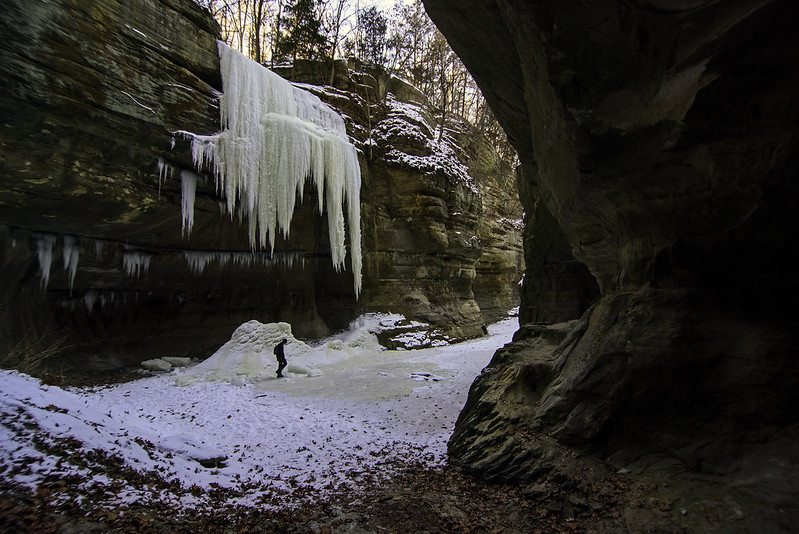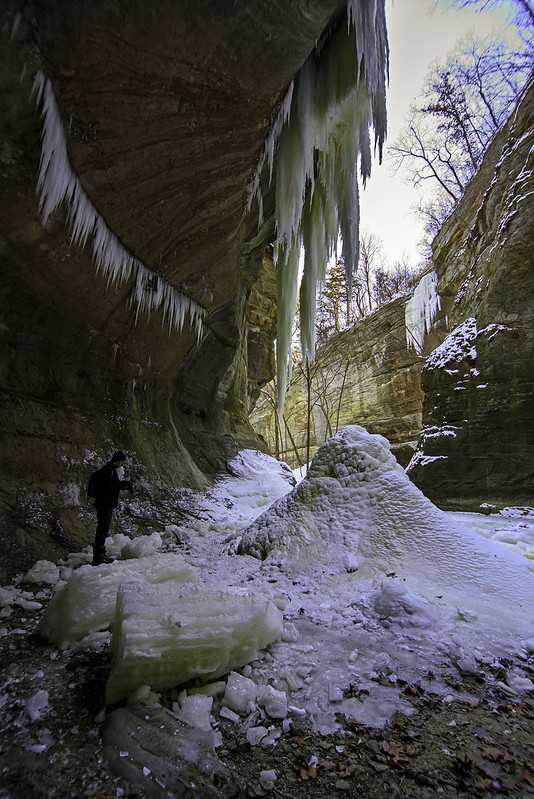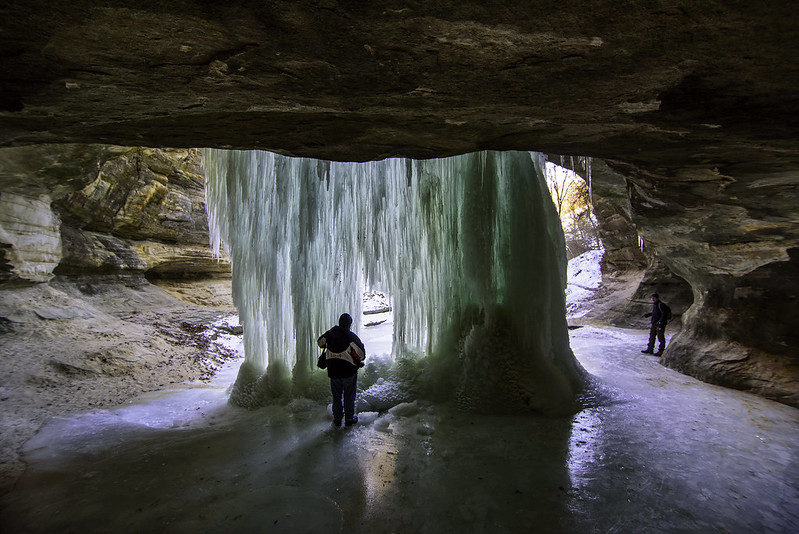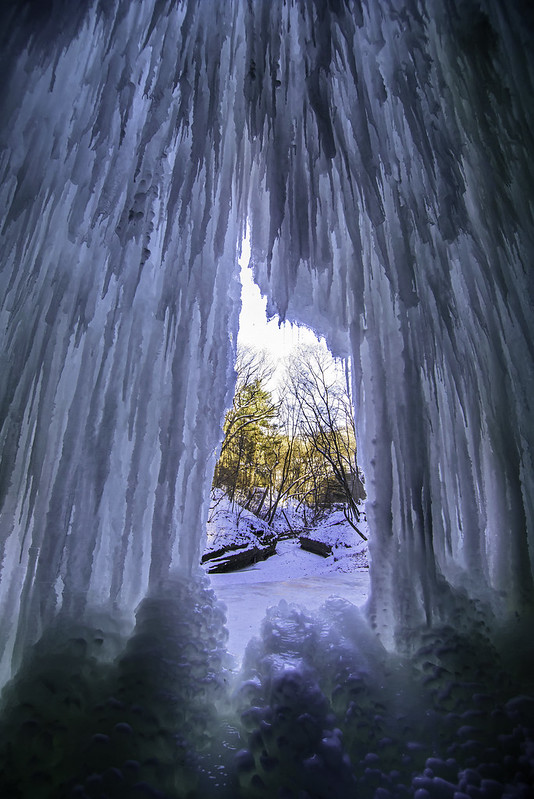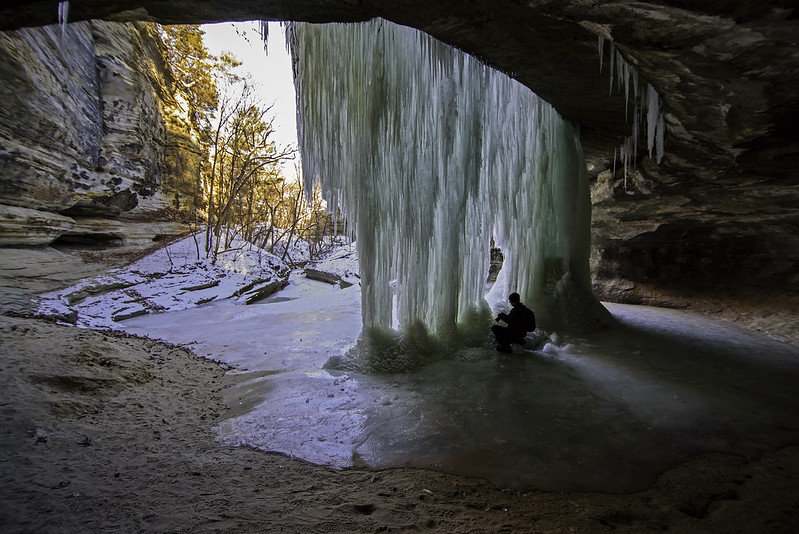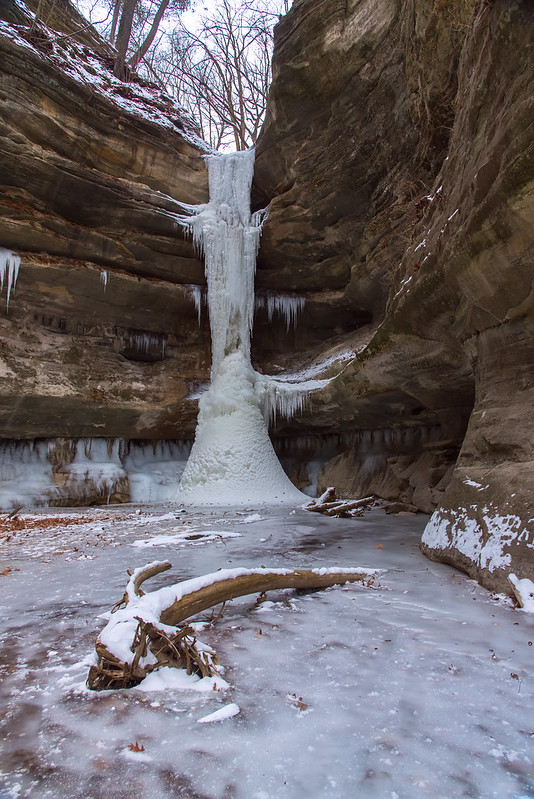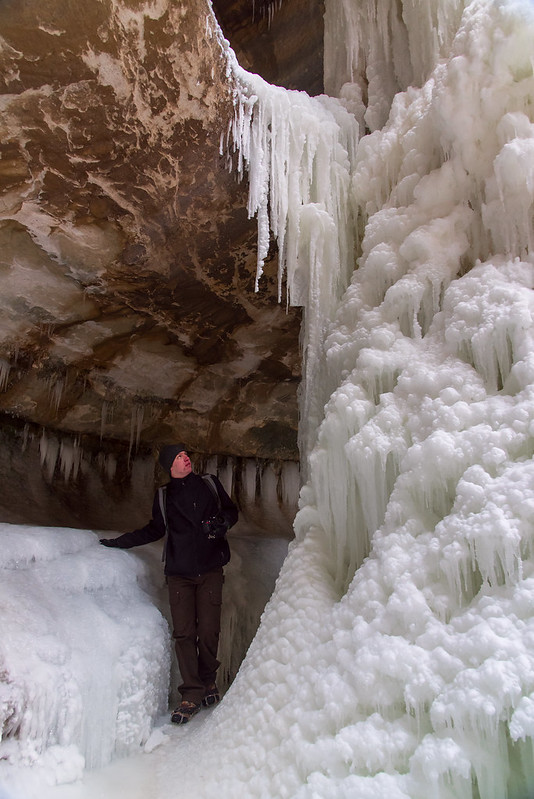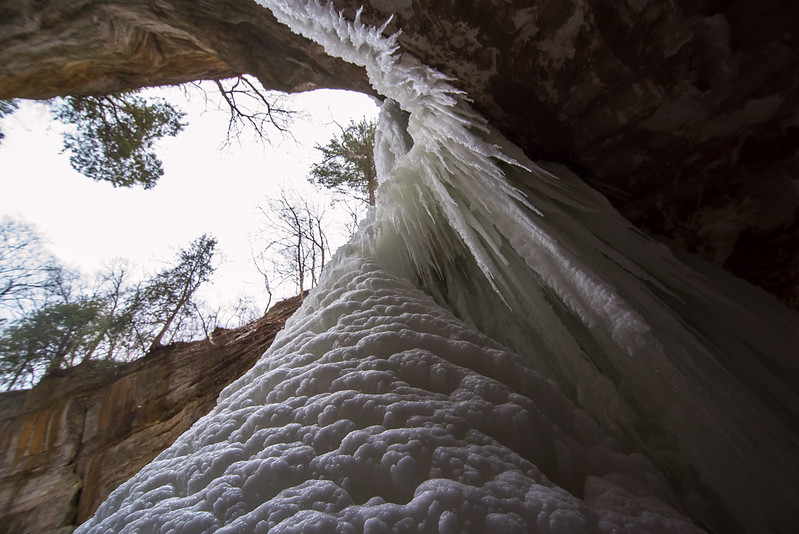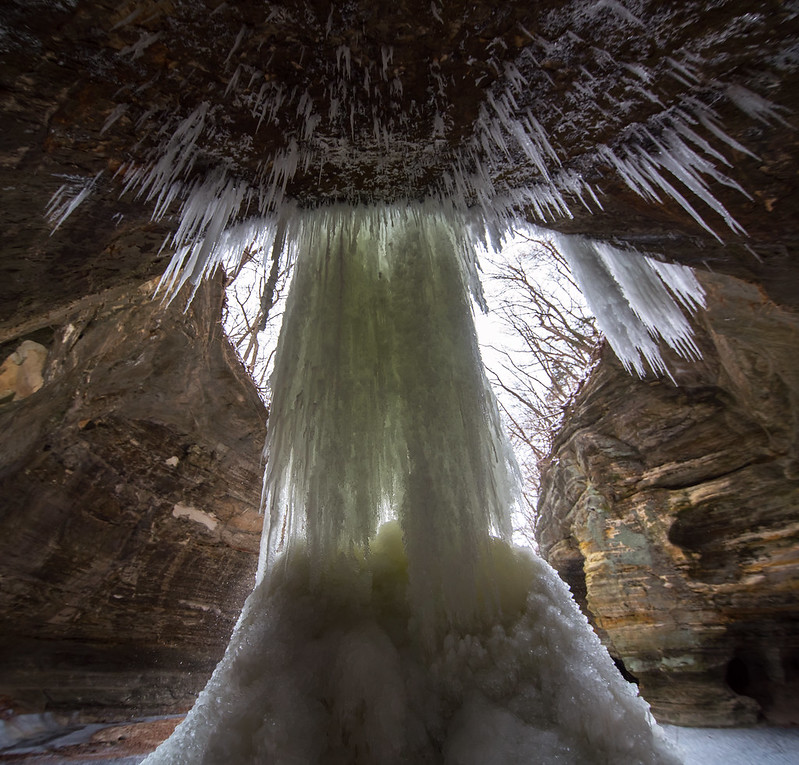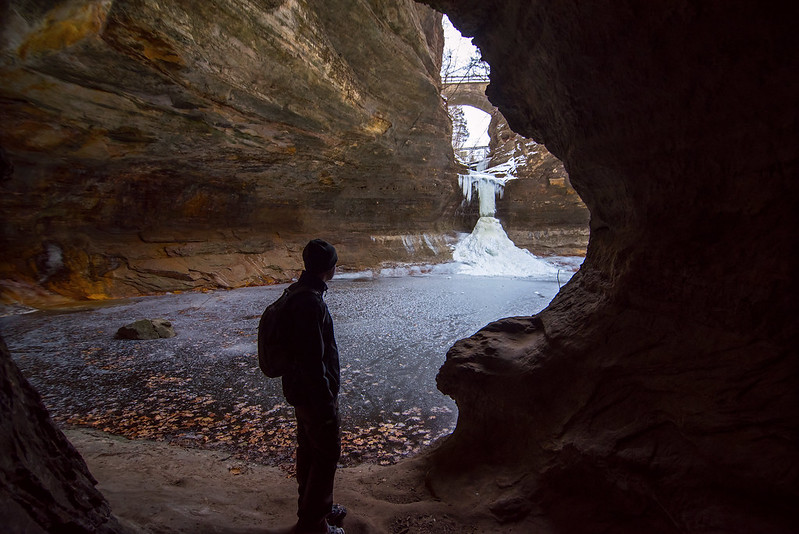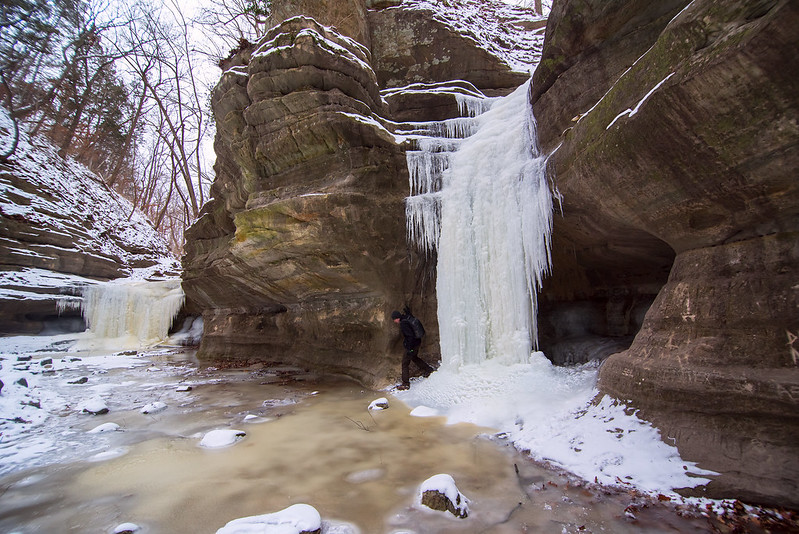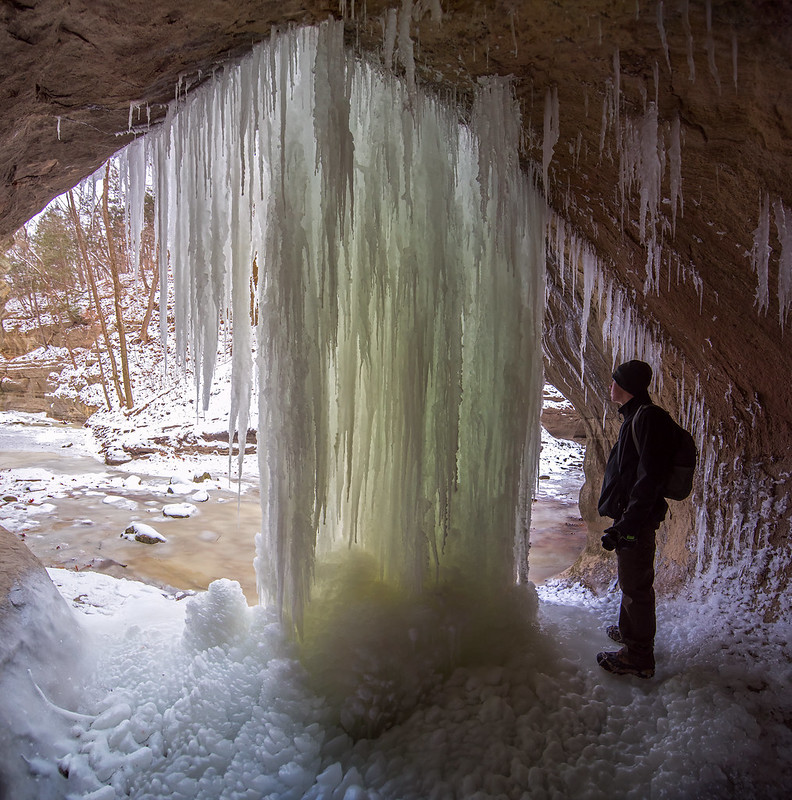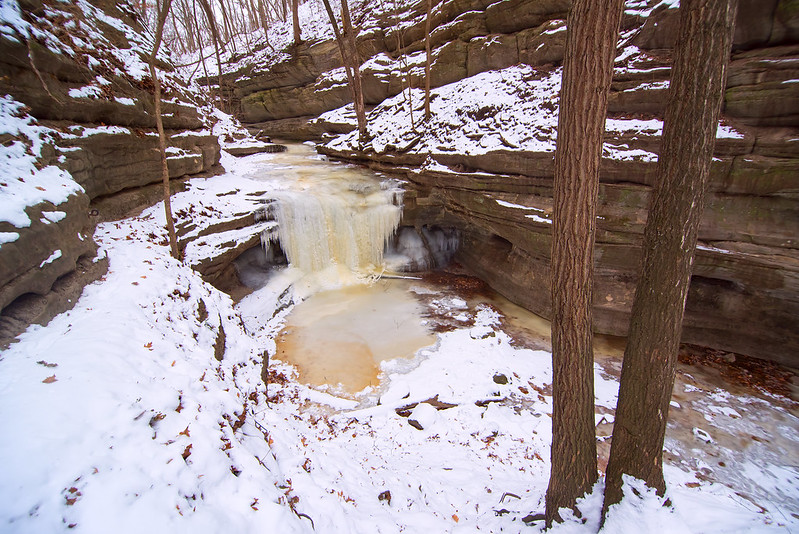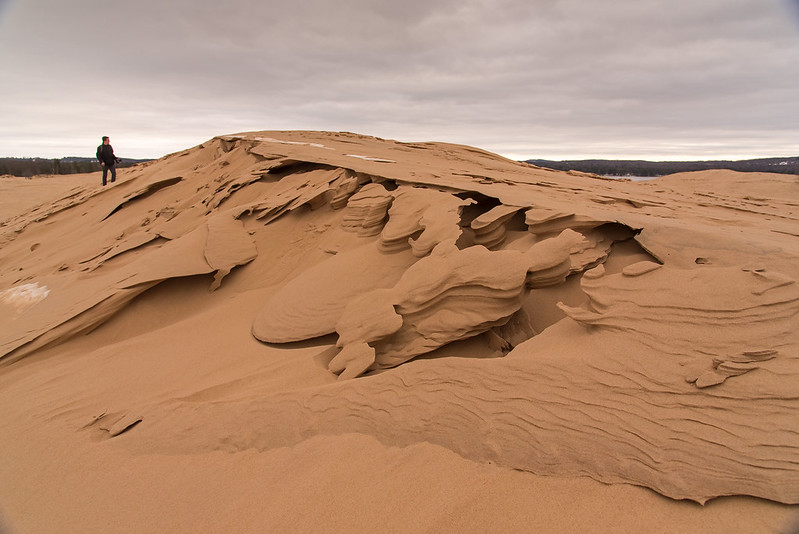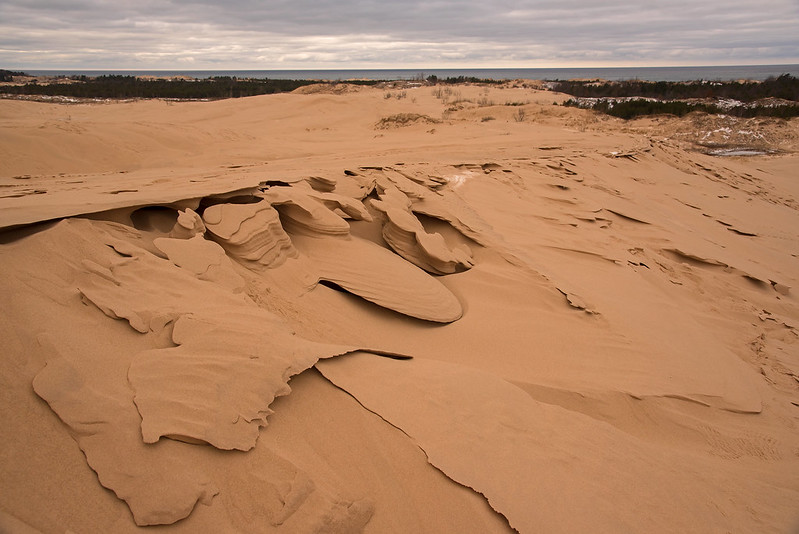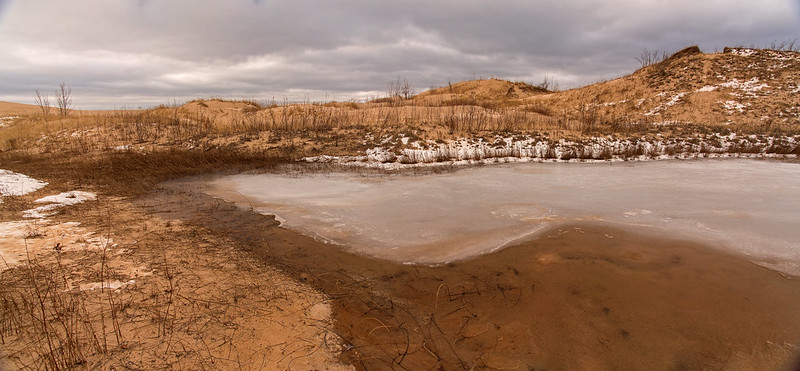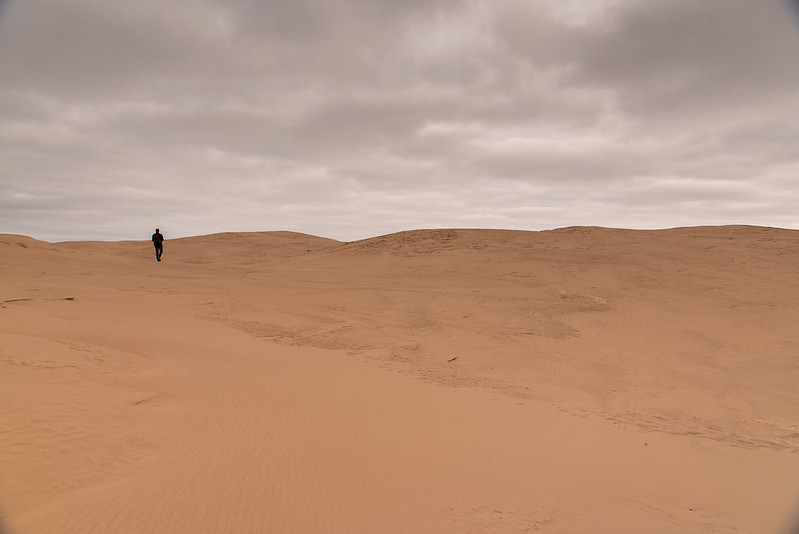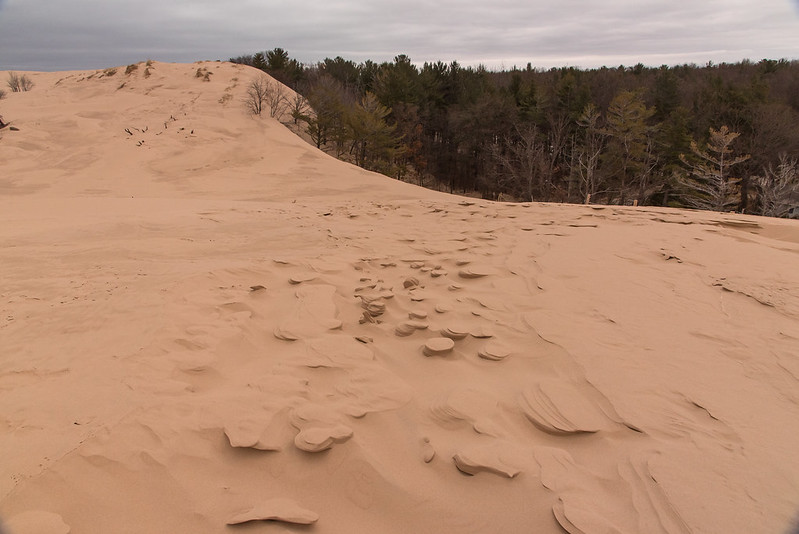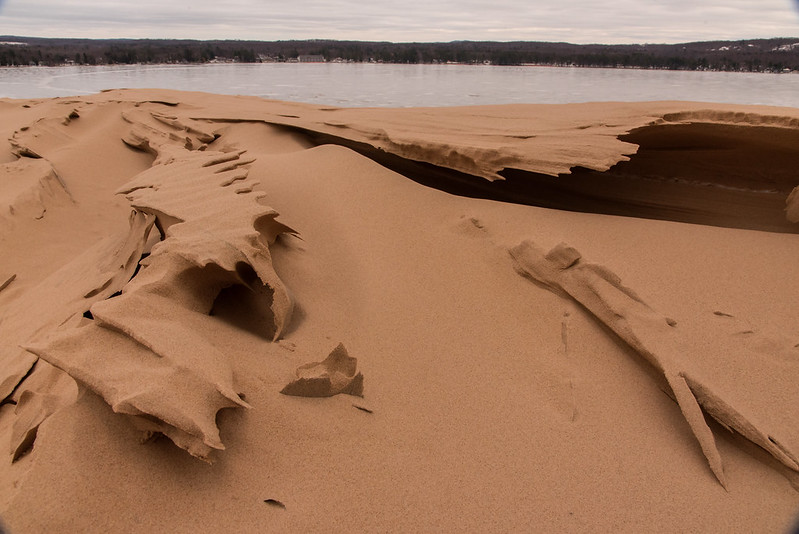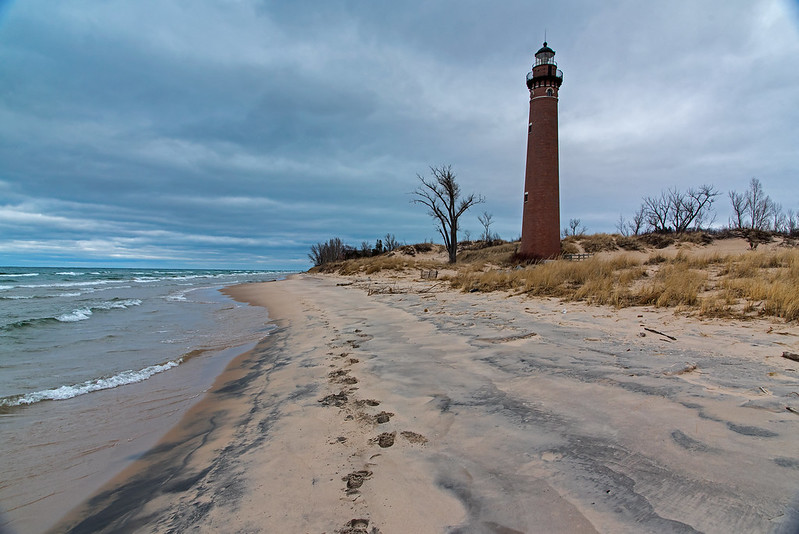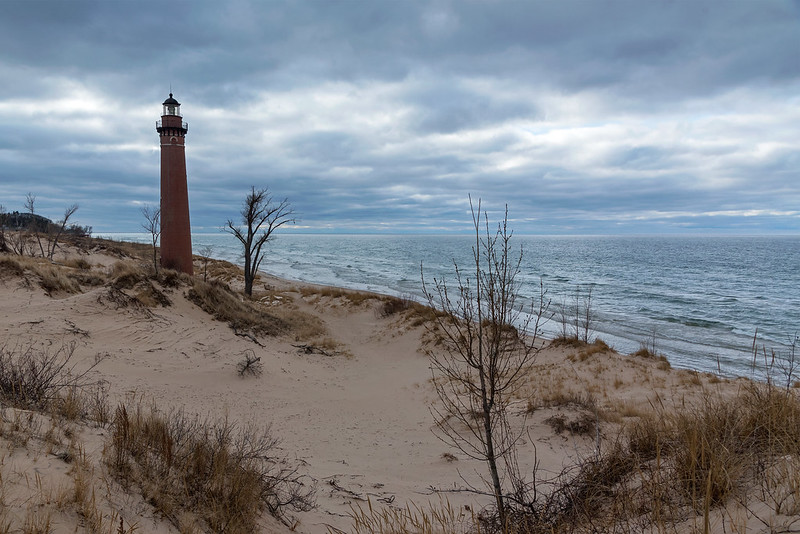
Winter often creates beautiful frozen waterfalls in the canyons of Illinois' Starved Rock State Park, and once they're tall enough to reach the canyon floor, they can often support climbers. With the supervision of park staff, climbers can take on a variety of ice climbing challenges.
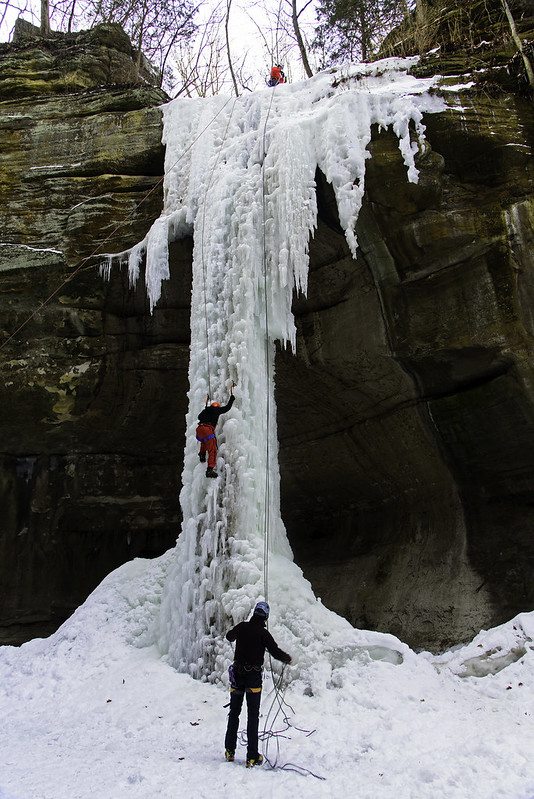
French Canyon and Wildcat Canyon falls are the frozen waterfalls I've seen climbed the most often, but on this warm winter afternoon, the climbers were in Tonti Canyon. This canyon is a lot farther from the visitor's center, so it requires quite a hike to and from, and is less frequently visited by casual hikers.
Of the two falls in Tonti Canyon, only this waterfall was complete and thick enough to climb this year. It's amazing how tall these ice falls are, and how difficult they must be to climb. Not only the physical climb, but keeping your arms above your head for the entire climb, in the cold, with freezing water dripping down constantly. It could certainly wear out a climber in a matter of minutes.
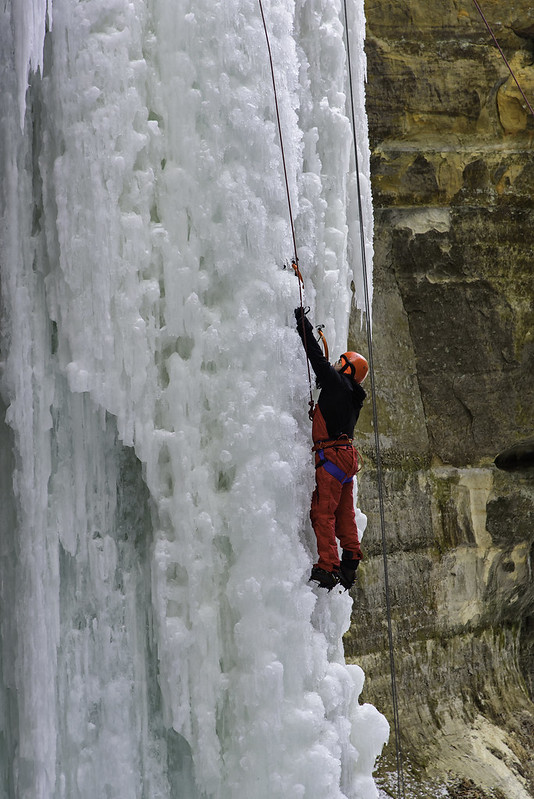
From the perspective of the climber, a good path to the top of the falls must be much more difficult than it appears to the observer on the ground. Listening to the climber and the support people on the ground, I realized how hard it must be to negotiate the twists and turns of the ice with your face just inches away.
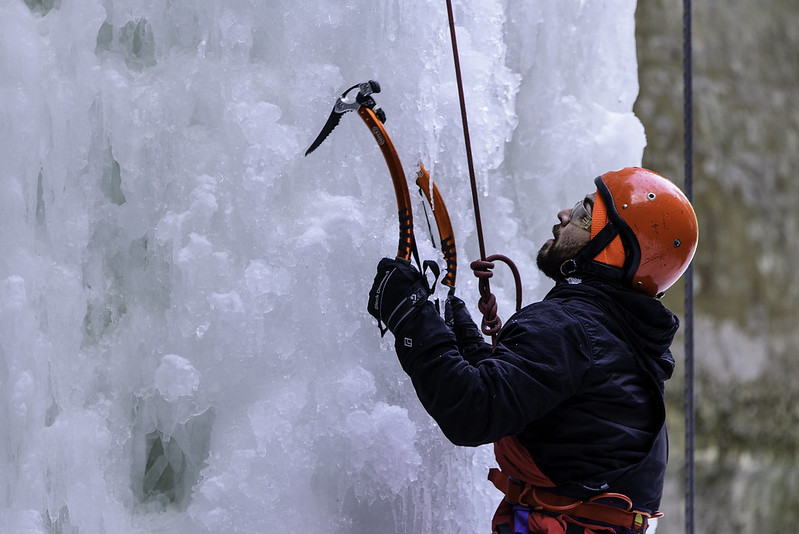
Contemplating the next move while supported only by ice axes and crampons, this climber attempts to look up for the best way to the top.

Once at the top of the falls, the climbers can rest a bit before their decent down the falls, back to the canyon floor. The decent seemed a lot easier, yet one must be careful of falling ice, and dropping to the ground too quickly.
The past two days have seen temperatures above 50 degrees, so these falls are most likely history, but another week or so of cold weather can create more of these interesting ice falls.
